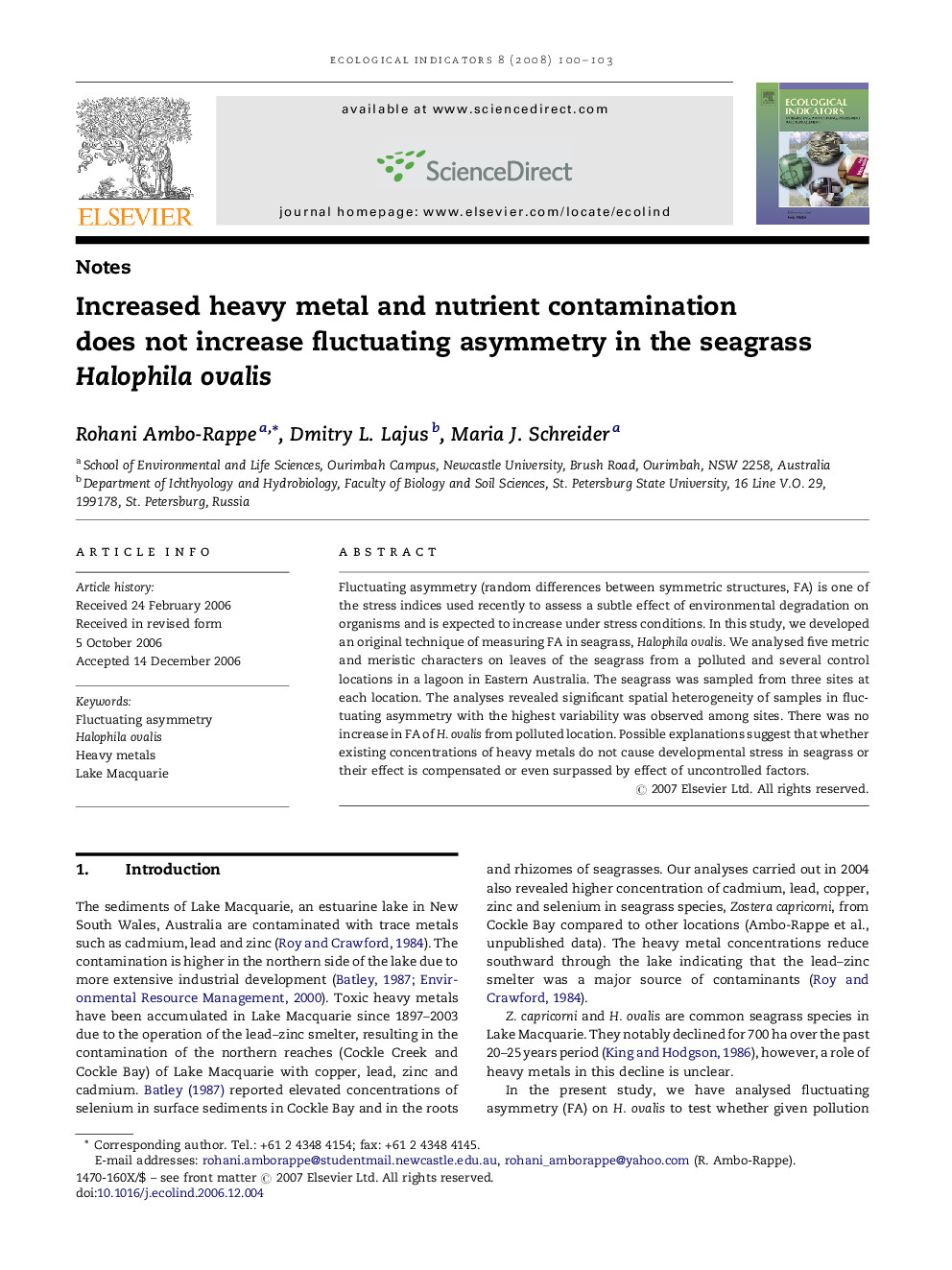| Article ID | Journal | Published Year | Pages | File Type |
|---|---|---|---|---|
| 4374608 | Ecological Indicators | 2008 | 4 Pages |
Abstract
Fluctuating asymmetry (random differences between symmetric structures, FA) is one of the stress indices used recently to assess a subtle effect of environmental degradation on organisms and is expected to increase under stress conditions. In this study, we developed an original technique of measuring FA in seagrass, Halophila ovalis. We analysed five metric and meristic characters on leaves of the seagrass from a polluted and several control locations in a lagoon in Eastern Australia. The seagrass was sampled from three sites at each location. The analyses revealed significant spatial heterogeneity of samples in fluctuating asymmetry with the highest variability was observed among sites. There was no increase in FA of H. ovalis from polluted location. Possible explanations suggest that whether existing concentrations of heavy metals do not cause developmental stress in seagrass or their effect is compensated or even surpassed by effect of uncontrolled factors.
Related Topics
Life Sciences
Agricultural and Biological Sciences
Ecology, Evolution, Behavior and Systematics
Authors
Rohani Ambo-Rappe, Dmitry L. Lajus, Maria J. Schreider,
